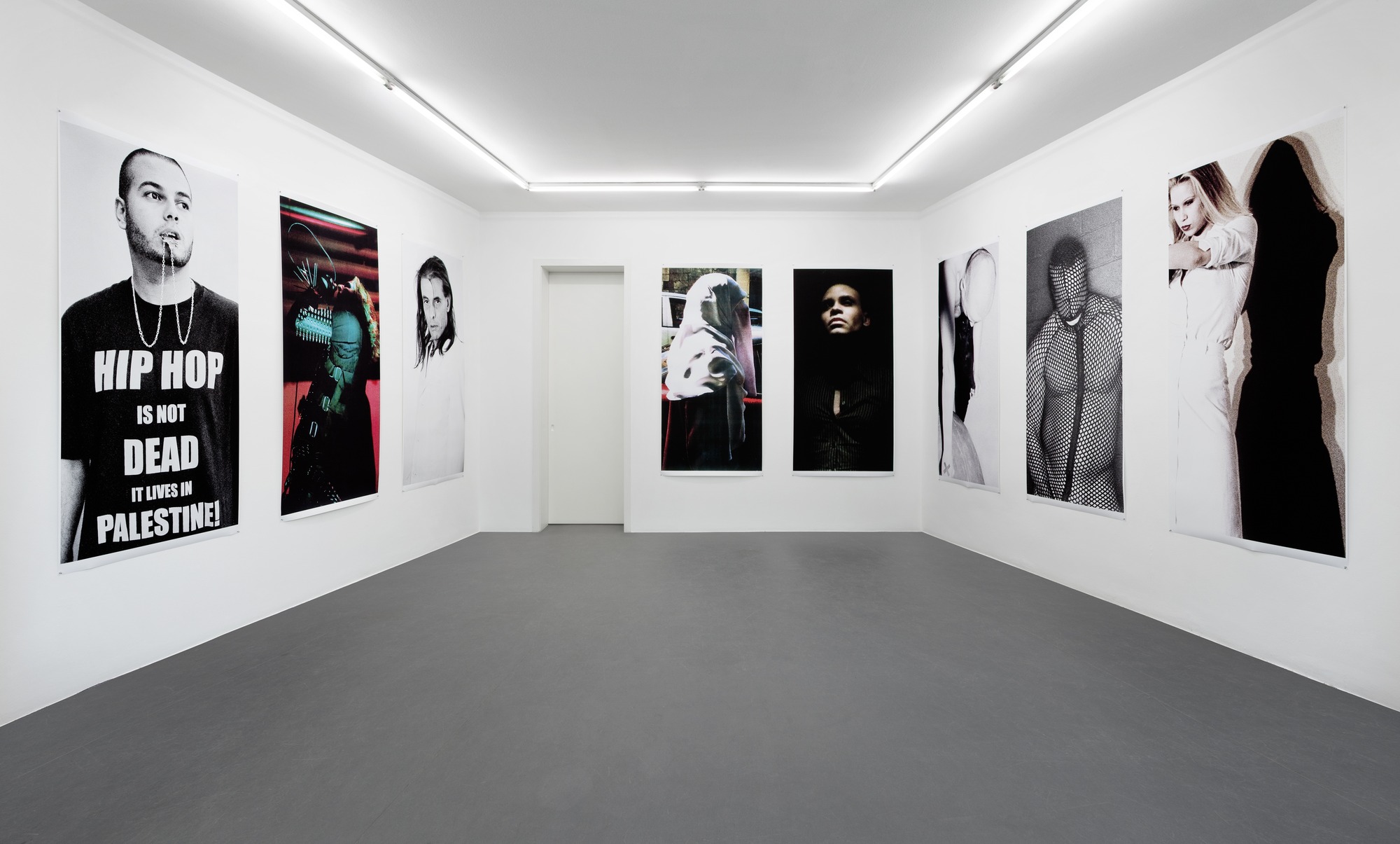CADAVRE EXQUIS BY BARBARA J. SCHEUERMANN

Cadavre Exquis I-VIII, 2008/2009, 8 pigment prints, each 230 x 112 cm
Subculture. Pola Sieverding repeatedly places the focus on people who understand themselves as part of a subculture or alternative culture, whether hip hop, the New York gay scene, a variety of metal subcultures, or the Berlin club scene. In most of her photographs, individual people. The photographs are thus not about the depiction of a culture as a collective movement, but rather the depiction of individual persons, shown in a certain pose at the moment of exposure. The artist terms these photos of individual actors (here the word “actor” should be understood quite literally), many taken in close proximity, as “assertions of portraits,” since they often conceal more than they reveal. In this way, they undermine—or seem at first glance to undermine—the classical claim of the portrait to reveal the true personality of the person portrayed.
Active Observation. Pola Sieverding conceives of her position as that of the “active observer.” It is only in this way, involved on the one hand, distanced by the camera from the action on the other, that the artist can achieve images of such concentration, the intimacy of which sometimes lets us forget that the person shown is likely not in a sheltered studio environment, but rather surrounded by other people in a (half-)public space.
Queerness. We see the spike-armored metal singer, the dancer in full-body netting, a man with luminous make-up, a veiled woman: All of them embody different social concepts and positions, and fill out these concepts not least with the help of props and masquerades. It is striking that Sieverding often draws on protagonists whose biological sex can be difficult to determine. These protagonists serve as particularly impressive examples of “queerness,” in the sense of the equivocal, as a synonym for liberation from rigid ascriptions and norms. These fragile and hybrid portraits make plain how closely our social paradigms are tied to determinations of gender and sexuality. This manifests a perspective of Sieverding’s that is very much a “feminist” one.
Temporary Conceptions of the Subject. Pola Sieverding understands her images as offering “temporary conceptions of the subject,” as a critical commentary on prevailing principles of differentiation. This also gives expression to her interest in the degree of self-determination in every person. It thus makes perfect sense that the artist creates connections between photographs drawn from different cultures. Portraits juxtaposed alongside one another make Western city nightlife and everyday occurrences in Eastern crisis regions serve as foils for one another. The social concept of convention and “normality” thereby loses all relevance and is fundamentally called into question.
Translation: Ben Letzler
